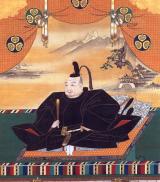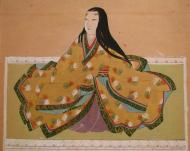Kdo chodil s Iejasu Tokugawa?
Ača datováno Iejasu Tokugawa od ? do ?. Věkový rozdíl byl 12 roky, 1 měsíců a 16 dny.
Saigó datováno Iejasu Tokugawa od ? do ?.
Iejasu Tokugawa

Iejasu Tokugawa (japonsky 徳川 家康, Tokugawa Iejasu; 31. ledna 1543 – 1. června 1616), známý také pod jmény Takečijo Macudaira (松平 竹千代) (1543–1556), Motonobu Macudaira (松平 元信) (1556–1566), také 元康 (Motojasu), 家康 (Iejasu), byl vedle Hidejošiho Tojotomiho a Nobunagy Ody jednou ze tří nejvýznamnějších osobností japonské Éry válčících států (Sengoku džidai). Zásadním způsobem ovlivnil politický vývoj země, když roku 1603 ustavil šógunát Tokugawa, který zanikl až roku 1868 v době tzv. reforem Meidži.
Přečtěte si více...Ača

Iejasu Tokugawa

Saigó

Lady Saigō (西郷局 or 西郷の局 Saigō no Tsubone; 1552 – 1 July 1589), also known as Oai, was one of the concubines of Tokugawa Ieyasu, the samurai lord who unified Japan at the end of the sixteenth century and then ruled as shōgun. She was also the mother of the second Tokugawa shōgun, Tokugawa Hidetada. Her contributions were considered so significant that she was posthumously inducted to the Senior First Rank of the Imperial Court, the highest honor that could be conferred by the Emperor of Japan.
During their relationship, Lady Saigō influenced Ieyasu's philosophies, choice of allies, and policies as he rose to power during the late Sengoku period, and she thus had an indirect effect on the organization and composition of the Tokugawa shogunate. Although less is known of her than some other figures of the era, she is generally regarded as the "power behind the throne", and her life has been compared to a "Cinderella story" of feudal Japan.
Once she was in a respected and secure position as the official concubine and mother to Ieyasu's heir, Lady Saigō used her influence and wealth for charitable purposes. A devout Buddhist, she donated money to temples in Suruga Province, where she resided as the consort of Ieyasu, first in Hamamatsu Castle and later in Sunpu Castle. As she was quite near-sighted, she also established a charitable organization that assisted visually impaired women with no other means of support. Lady Saigō died at a fairly young age, under somewhat mysterious circumstances. Although murder was suspected, no culprit was identified.
Lady Saigō bore four children: she had a son and a daughter (Saigō Katsutada and Tokuhime) while married, and she later bore two sons as the consort of Tokugawa Ieyasu: Tokugawa Hidetada and Matsudaira Tadayoshi. Among the descendants of Lady Saigō was the Empress Meishō (1624–1696), one of very few women to accede to the Chrysanthemum Throne as empress regnant.
Přečtěte si více...